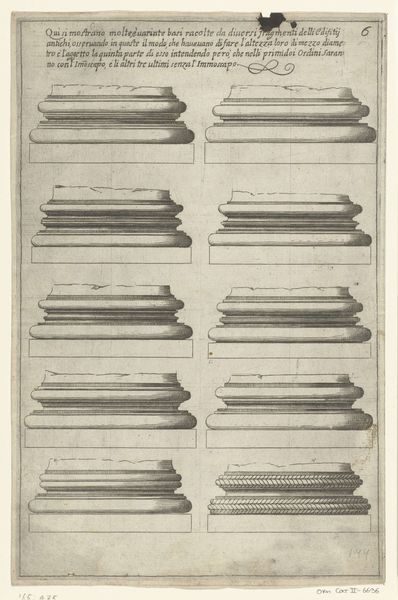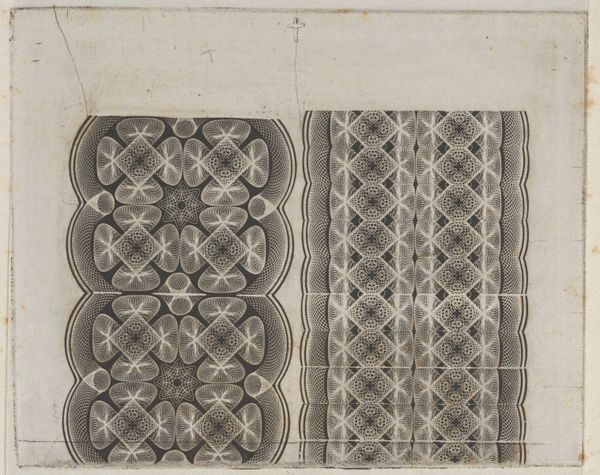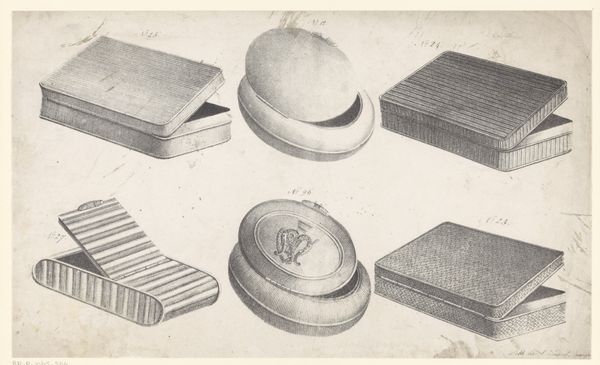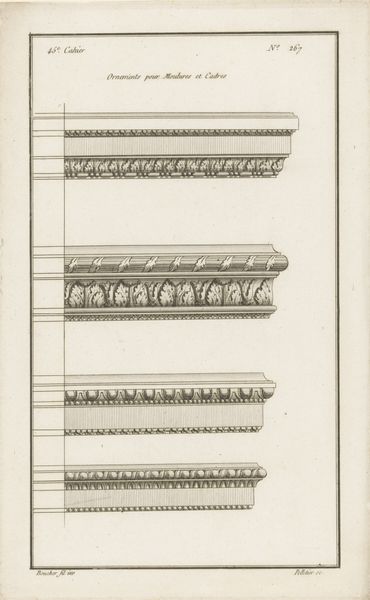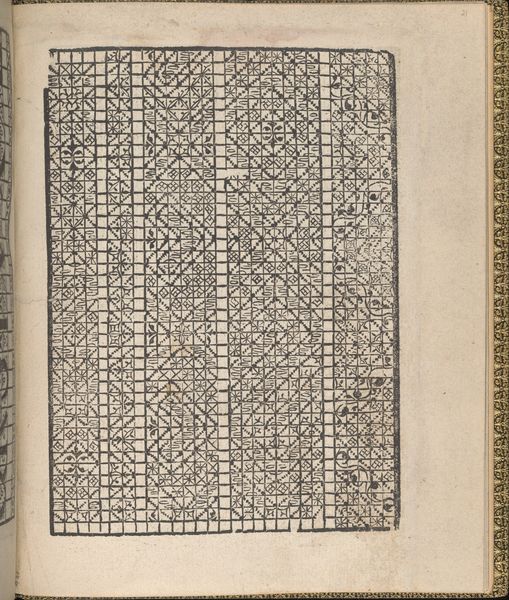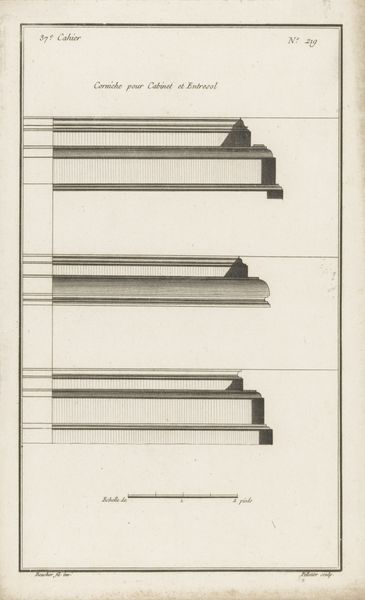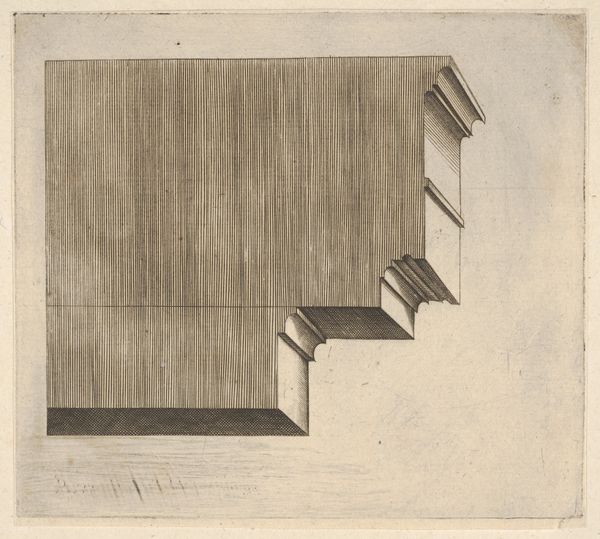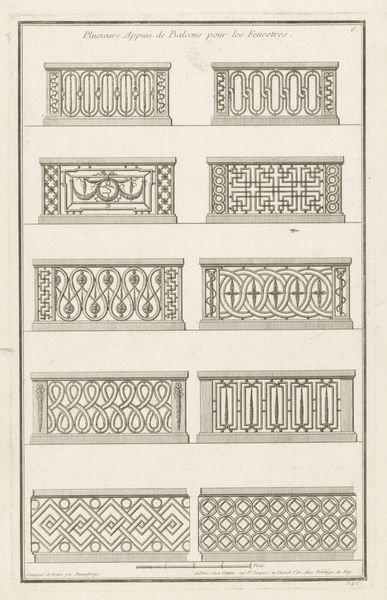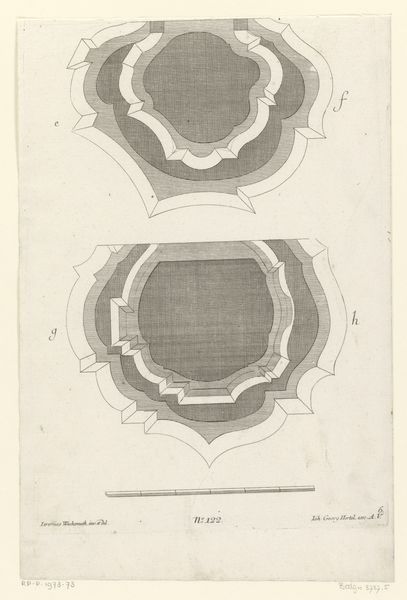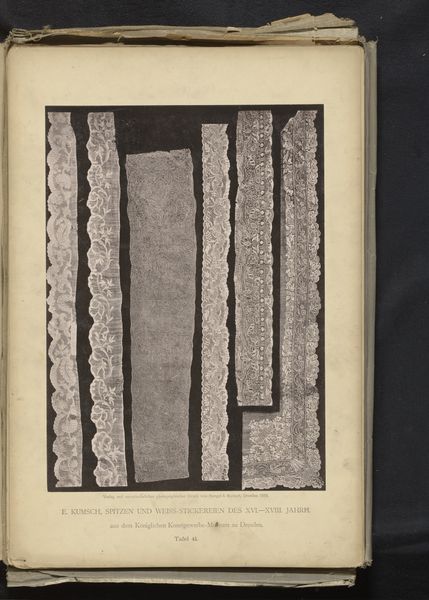
Studieblad med fem rækker af terninger og brudstykker af runde stave 1769
0:00
0:00
drawing, print, engraving
#
drawing
#
neoclacissism
# print
#
form
#
geometric
#
line
#
engraving
Dimensions: 98 mm (height) x 154 mm (width) (plademaal)
J.F. Clemens created this study sheet of dice and round staffs using engraving techniques. The regular repetition of these forms invites us to consider its institutional context. Engravings like this were key to academic art education in late 18th-century Europe. Art academies had a strong emphasis on the mastery of form and perspective. Students diligently copied prints such as these, and later moved on to drawing plaster casts of antique sculptures, all in the name of mastering the artistic canon. This rigorous, top-down approach served to create a shared visual culture across Europe. The dominance of academies also had its detractors. Critics questioned the emphasis on tradition, calling for more individual expression and attention to contemporary life. We can better understand the tensions between academic tradition and artistic innovation by delving into the archives of institutions like the Royal Danish Academy of Fine Arts. They tell a fascinating story of the social forces at play in the art world.
Comments
No comments
Be the first to comment and join the conversation on the ultimate creative platform.
